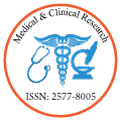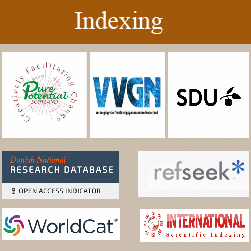Breakthrough Mucormycosis In Two Cases Of Hematological Malignancies Successfully Treated With Amphotericin B Colloidal Dispersion
Author(s):
Yang Xu, Yin Liu, Mingming Hu, Baoquan Song, Xin Kong, Zhihong Lin, Jian Zhang Huiying Qiu
Background: Patients with hematologic malignancies have poor immunity, and they are more vulnerable to fungal invasion because of disease characteristics and clinical treatment such as chemotherapy. Mucor infections in hematologic malignancies are rare, but once occurred usually lead to high mortality. In this study, we report two cases of hematologic malignancies complicated with breakthrough mucormycosis (BT-MCR), which were treated with amphotericin B colloidal dispersion (ABCD) combined with or without other antifungal agents.
Case Presentation: Case 1 shows a patient with natural killer cell leukemia, type 2 diabetes, and graft-versus-host disease after allogeneic hematopoietic stem cell transplantation (allo-HSCT). This patient was admitted to the First Affiliated Hospital of Soochow University because of fever with cough and expectoration for a week. Next-generation sequencing (NGS) of alveolar lavage fluid revealed that the patient was infected with Rhizomucor pusillus and Enterococcus faecalis. This patient was infected with fungi although he had taken voriconazole for prevention. Considering the renal toxicity of amphotericin B deoxycholate, the patient received ABCD via intravenous drip combined with posaconazole via oral administration for Rhizomucor pusillus infection and meropenem via intravenous drip for Enterococcus faecalis infection during 45 days of treatment. The patient was free of complaints in the next 2-month follow-up. Case 2 represents a patient with acute myeloid leukemia. During induction chemotherapy, the patient presented with weakness of the left limbs, and head MRI showed multiple cerebral infarctions (MCI). In addition, he had high fever with right-face swelling and pain, and the NGS of blood revealed that he had Mucor circinelloides and Stenotrophomonas maltophilia infection. ABCD and ceftazidime/avibactam were administered to the patients via intravenous drip. The patient also achieved complete remission after later consolidation chemotherapy and successfully underwent allo-HSCT.
Conclusion: ABCD shows great efficiency with or without other antifungal agents in treating hematological malignancies complicated with BT-MCR. Despite its infusion-related adverse effects and nephrotoxicity, ABCD shows great application potential for patients with hematologic malignancies, who are often more susceptible to fatal BT-MCR. Furthermore, more valid data should be collected on the combination therapy (ABCD and posaconazole)



